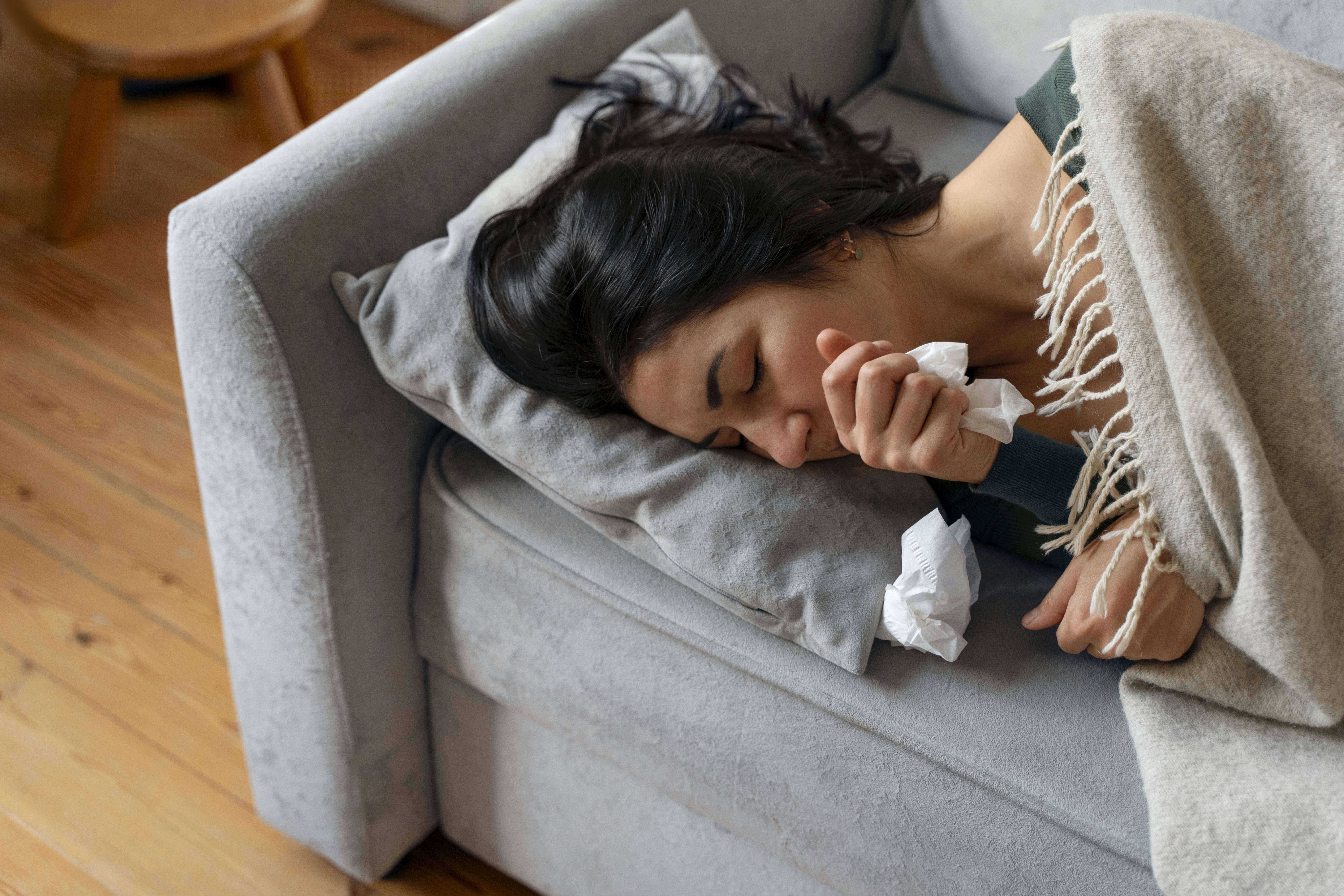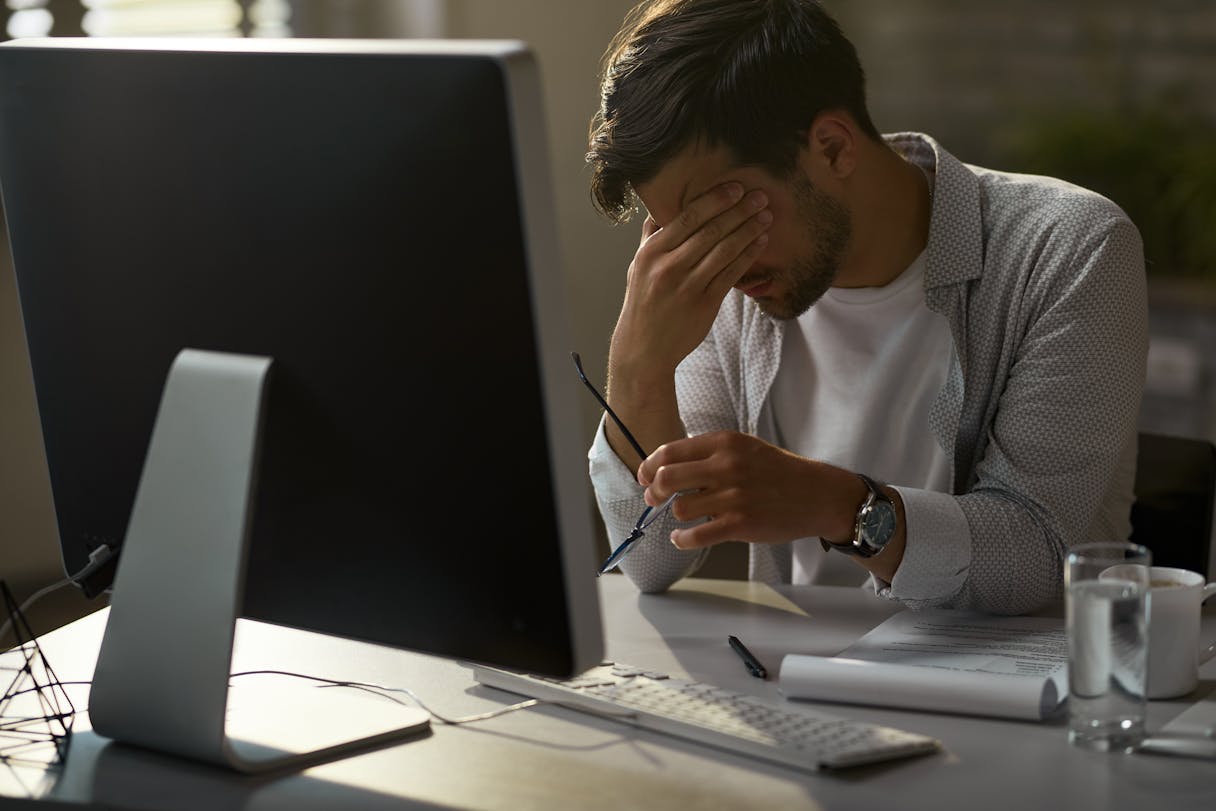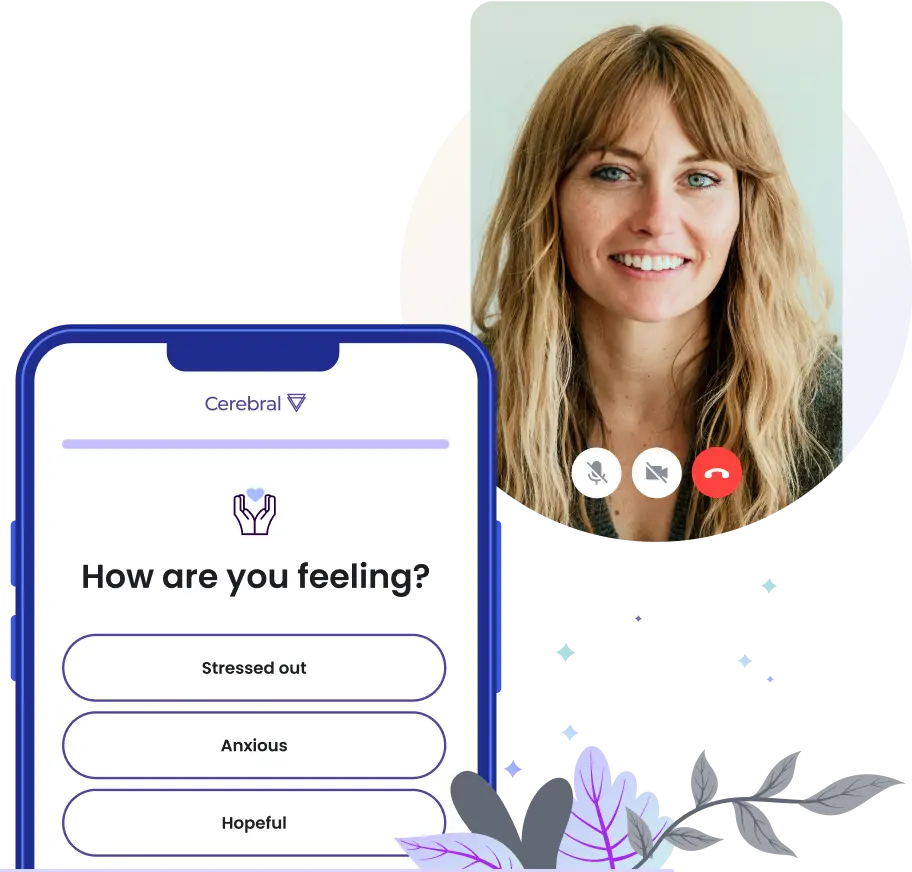9 Physical Symptoms of Anxiety

Anxiety — both as a feeling and a disorder — manifests not just in the realm of our thoughts and emotions but also physically, impacting multiple aspects of our well-being. From persistent headaches to an inexplicably rapid heart rate, the physical symptoms of anxiety can be as debilitating as the psychological strain.
In this general overview, we’ll uncover the nine common physical symptoms that can be associated with anxiety. Beyond identifying the physical signs, you’ll also learn how understanding the long-term effects of anxiety on the body, practical coping skills, and therapeutic and pharmaceutical treatment options may help in managing anxiety symptoms.
Common physical symptoms of anxiety
Take a breath. In and out. In. And out. Whether you realize it or not, your breath might be slightly shallower and quicker than usual.
That's anxiety for you — people can experience a variety of physical symptoms because these disorders and feelings can subtly alter physiological responses without our conscious awareness.
Let’s explore the 9 physical symptoms commonly associated with anxiety and anxiety disorders.
Fatigue
Marked by an overwhelming sense of exhaustion, it's that ”can't get out of bed” feeling, even if you've had hours of restful sleep, which — truth be told — is rare when experiencing anxiety.
Fatigue results from your nervous system working overtime, keeping you on high alert, and sleeping enough — or more — won’t relieve this symptom.
Headaches
They're the pulsing kind, usually above your eyes. This throbbing pain is a symptom of tightened neck and facial muscles, often associated with anxiety-related stress and tension.
The relentless nature of these headaches can substantially impact daily functions, compelling you to seek relief.
Anxiety shakes or anxiety shivers
Anxiety shakes and anxiety shivers are physiological responses to heightened states of anxiety or stress. Your body can involuntarily react with rapid, jittery movements or a quivering sensation.
Tremors or shaking are part of the body's fight-or-flight response, designed to prepare for perceived threats, and can occur even in the absence of physical danger.
Muscle tension
Anxiety increases tension in your muscles. The heightened state of alertness that accompanies anxiety prompts your body's muscles to contract, preparing you to respond to perceived threats.
As one of the signs of anxiety, this prolonged muscle tightness can lead to discomfort in various parts of your body, including painful knots in your back.
Back bain
A direct sequel to prolonged muscle tension, back pain emerges as muscles remain in a constant state of stiffness and contraction.
Your mobility and daily activities could potentially become restricted by the pain caused by this physical symptom of anxiety.
Nausea
Interfering with the digestive system, anxiety can induce feelings of nausea, serving as a physical reminder of its presence.
This uneasy sensation often leads to a decreased appetite and can dramatically alter eating habits, which might inadvertently make anxiety worse by affecting overall health and energy levels.
Rapid heart rate
Have you ever been sitting down, watching TV, and suddenly your heart races like you just ran a marathon? Anxiety can cause your heart rate to accelerate unexpectedly, even in the absence of physical exertion, as part of the body's heightened response to perceived stress.
This sudden increase in heart rate can be alarming, potentially heightening your anxiety further as you wonder about its cause. It's a stark reminder of how closely our mental state can impact our physical well-being.
Changes in libido
The impact of anxiety on sexual desire can be significant, with potential reductions in libido affecting both males and females.
This often overlooked symptom can strain personal relationships and contribute to feelings of inadequacy or stress, further complicating one's mental health.
Shortness of breath
Anxiety can disrupt typical respiratory patterns, leading to experiences of breathlessness even when you haven’t done anything active. This change in breathing patterns is often caused by the body's natural response to stress or fear.

Long-term effects of anxiety on the body
Anxiety, often perceived primarily as a mental health concern, can also have lasting effects on your physical health. Over time, it can impact your body in several ways:
- Central nervous system: Anxiety can create lasting alterations in brain functionality and structure, which can affect neurological disorders and contribute to difficulties in concentration, memory, and mood stability.
- Cardiovascular system: Chronic anxiety can strain the cardiovascular system, leading to elevated blood pressure and an increased risk of heart disease over time.
- Immune system: The constant stress response associated with anxiety can weaken your immune response, making you more susceptible to infections and illnesses.
- Digestive system: The stress-response system that activates during anxiety episodes can alter digestive processes and nutrient absorption, and prolonged impact can also cause issues like irritable bowel syndrome (IBS), ulcers, and chronic indigestion.
- Respiratory system: The respiratory effects can be stifling if left unmanaged — prolonged anxiety can worsen respiratory disorders like asthma and chronic obstructive pulmonary disease (COPD).
Understanding how to reduce anxiety not only helps improve your mental well-being but also helps protect and support your physical health.

How to relieve symptoms of anxiety
Anxiety thrives when it has free rein over your thoughts. However, you can establish defenses against it to protect both your mind and body against anxiety's effects.
These coping strategies address how you can relieve the psychological and physical symptoms of anxiety:
- Mindfulness redirects your thoughts and focuses your mind on the present, which helps turn down the intensity of your anxiety.
- Breathing techniques are like mental stretches for your 'fight or flight' response, helping you relax your muscles and slow down your thoughts.
- Progressive muscle relaxation systematically tenses and then relaxes each muscle group, teaching your body what relaxation feels like again.
- Healthy eating gives your body the necessary nutrients to regulate mood and reduce stress.
- Exercise releases endorphins, which are your body's natural stress fighters.
Incorporating these coping strategies into your routine can enhance your resilience to anxiety and help you maintain control over both your mental and physical health.
Treatment options for anxiety disorders
With a wide array of treatment options available, managing anxiety disorders has become an achievable goal for many. From therapy to medication, a mental health professional can help you find a care plan for your needs.
Therapy for anxiety disorders
Therapy for anxiety symptoms and disorders can come in various forms, such as cognitive behavioral therapy (CBT), exposure therapy, or dialectical behavior therapy (DBT).
Cognitive behavioral therapy focuses on identifying and changing negative thought patterns that fuel anxiety. By breaking down overwhelming fears into smaller, more manageable parts, CBT could help you confront your anxieties in a safe environment.
This therapy emphasizes the development of personal coping strategies, teaching you to challenge distorted perceptions and change your reactions to anxiety-inducing situations.
Exposure therapy is based on the principle that facing your fears is essential to overcoming them. This approach gradually and systematically exposes individuals to the objects or situations that provoke anxiety in a controlled setting.
Over time, repeated exposure decreases the power these triggers have, reducing fear and anxiety levels. It’s particularly effective for specific phobias and obsessive-compulsive disorder (OCD).
Dialectical behavior therapy combines cognitive-behavioral techniques with mindfulness practices. DBT is designed to help manage distress, regulate emotions, and improve relationships.
This approach is especially beneficial for those with complex or hard-to-treat disorders, helping them to deal with intense emotional turmoil and impulses.
Free resource: How to Soothe Anxiety with DBT Skills
Therapy provides a supportive space to understand and work through underlying issues that may be causing anxiety. This part of an anxiety treatment plan also equips you with tools to manage symptoms and cope with triggers.
Medication for anxiety disorders
For some, medications may help manage the symptoms of anxiety disorders. While therapy focuses on the psychological aspects, medications address the neurochemical imbalances that might contribute to persistent anxiety.
Anti-anxiety medication, selective serotonin reuptake inhibitors (SSRIs), serotonin-norepinephrine reuptake inhibitors (SNRIs), and beta-blockers are common prescriptions that may help reduce anxiety symptoms. It's vital to have a discussion with a healthcare provider about the benefits and potential side effects of any medication in an anxiety treatment plan.
With Cerebral's online therapy and virtual medication management services, you can get personalized care from licensed prescribers, therapists, and care counselors to address an anxiety disorder.

How can I tell if I have an anxiety disorder?
If you’re experiencing these physical anxiety symptoms — and/or emotional signs of anxiety like difficulty concentrating, restlessness, and irritability — you can take an initial step in gaining more clarity by taking our free anxiety self-test.
While you’ll need to speak with a mental health professional to get a diagnosis, this free 3-minute screening tool suggests where your anxiety symptoms range on a scale of normal to severe, though only a licensed professional can give a diagnosis after a full evaluation.
Start on the path to a more serene and stable life — take our free anxiety screening tool today.
Images by DC Studio, freepik, and krakenimages on Freepik.
The information in this blog is provided as a general educational resource only, and is not to be used or relied on for any diagnostic or treatment purpose. This information should not be used as a substitute for professional diagnosis and treatment and does not create any patient-physician relationship between you and Cerebral. Please consult your health care provider before making any health care decisions or to get guidance about a specific medical condition.

Relationship Anxiety: Understand the Signs and Ways to Cope

Anxiety and Memory Loss

Experts Recommend Anxiety Screening for Those 19-65

Call 911 if you’re having a
mental health emergency
Text Home to 741-741 if you're in emotional
distress and need immediate support
Call or text 988 Suicide &
Crisis Lifeline. Chat service
is available at 988lifeline.org.